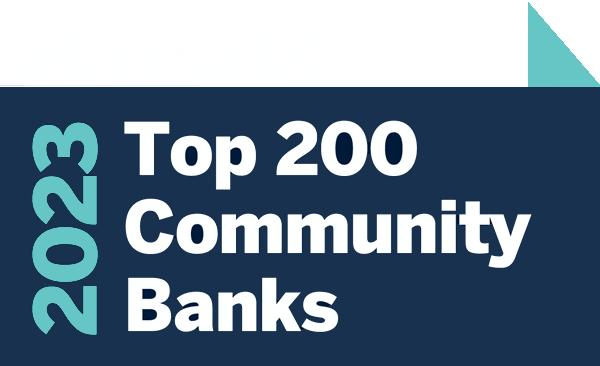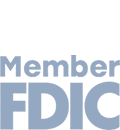BUSINESS BANKING
Strategies for Finding the Diverse Board Members You Need
Today’s community banks need to have both eyes on the future, and that can mean looking outside of familiar business circles for potential board members. Here are some strategies for finding diverse board members who can help your bank adapt to changing customer demands.
When protests rocked communities across America following George Floyd’s death in the summer of 2020, Alice Frazier, president and CEO of Bank of Charles Town, turned to the community bank’s advisory boards for insight. The board, which includes several people of color, discussed their perspectives on the community bank’s role in lifting up its local communities.
“The George Floyd incident brought forward a lot of conversations on social justice into the board room, and those members were able to talk to us and give us advice that we wouldn’t have had otherwise,” Frazier says.
Those conversations guided an internal statement Frazier wrote on George Floyd and the issue of social justice. In February of 2021, the $672 million-asset community bank in Charles Town, W.Va., was one of four local banks that created a $1 million lending fund to assist minority business owners.
“Having a diverse board really brings different perspectives to the table and the conversations we have,” Frazier says. “It would be easy to go and find your friends and develop a board that just goes along. But for us to have a truly sustainable bank that has a chance at long-term independence, it’s necessary to have the right board members. And they might not be inside that friend circle.”

When I’m talking to bank management, they have a better understanding today of needing to expand representation and diversification of the board.
—Phil Buffington, Adams and Reese LLP
Having a diverse board allowed Bank of Charles Town and, by extension, Frazier to better address the issues the bank’s communities were facing. But have a board with a plethora of perspectives has myriad benefits. Furthermore, a diverse board is not simply one that includes people of different racial backgrounds. Diversity encompasses an array of ages, genders and skill sets.
Having a board that includes people with a variety of experiences means management can find guidance and perspectives from multiple directions, and that can help the community bank to succeed.
“When I’m talking to bank management, they have a better understanding today of needing to expand representation and diversification of the board,” says Phil Buffington, a partner and financial services-community bank team leader at New Orleans-based Adams and Reese LLP, which counts many community banks as clients. “They know that serving a community means you have to understand the customers, and it’s good to get information from people from a variety of groups and thought processes who look at things in a different nature in some instances.”
I think it’s really important to look at the community you serve and try to emulate that in your bank and boardroom. It’s absolutely worth it and makes you a better bank, without question.
—Jeff Dick, MainStreet Bank
Beyond this key relationship-building, the business case for a diverse board isn’t simply theoretical. For example, a 2020 report from McKinsey & Co. found that companies in the top quartile for executive teams’ gender diversity were 25% more likely to have above-average profitability than companies in the bottom quartile. Companies in the top quartile in terms of ethnic and cultural diversity exceeded those in the bottom quartile by 36% in profitability.
“I think it’s really important to look at the community you serve and try to emulate that in your bank and boardroom,” says Jeff Dick, chairman and CEO of $1.7 billion-asset MainStreet Bank in Fairfax, Va. “It’s absolutely worth it and makes you a better bank, without question.”
Regulatory agencies also look favorably upon diversity. Reporting diversity and inclusion (D&I) data is still voluntary, but bank regulatory agencies encourage banks to self-assess and then report their racial and gender inclusion. This kind of transparency is being embraced elsewhere. In August, the Nasdaq issued a rule that requires listed companies to publicly disclose their board-level diversity statistics and include at least two diverse directors or explain why they do not.
Should you require board members be shareholders?
It’s standard practice for community banks to require board members to be shareholders. The logic behind this requirement is that board members are incentivized to run the bank well if they are invested in it. But the financial commitment needed for such a requirement may be an impediment to diversification, and some bank leaders are rethinking the tradition.
“I do think it’s fair to ask for investment, but when you stop and think about it, different people have different things to offer,” says Phil Buffington, a partner and financial services-community bank team leader at New Orleans-based Adams and Reese LLP. “Some people can bring time and talent more than financial resources. I might be able to attract the business or customers that the institution wants, so I can still accomplish the goal without my own personal investment.”
Jeff Dick, chairman and CEO of MainStreet Bank in Fairfax, Va., suggests that successful board members may not necessarily need to bring a significant amount of cash to the table. “What we’re seeing now is people starting to think, ‘What do I need for good governance? I need good governors. I need diversity. I need people living in my community,’” he says. “I think the idea that people need a lot of money to be good corporate stewards is simply not true.”
Overcoming barriers to diversity
It’s human nature when selecting board members to turn to our personal or professional networks. Such people, however, are likely to come from similar backgrounds as existing board members.
“In my experience, in some instances the attitude is, ‘I would rather have people around me who I know and are similar and have the same interests,’” Buffington says. “The problem is, when I’m on the board, I’m not just there to protect my own interests. I’m there to protect all shareholders. So, what should I do to do that? Do I need a more diverse board? How can the board makeup maximize return and protect the entity? Those are the issues you should be looking at. What board makeup is in the best interest of the institution?”
Nevertheless, finding board members outside your existing networks can be challenging. Some communities lack racial diversity, for example, and even where diversity exists, it may be hard to know where to start making connections.
Furthermore, bank boards do not normally pursue potential new members solely based on race, gender or age. They also need to be savvy professionals of good moral character who understand the value, role and responsibilities of a community bank. Finding a perfect candidate who checks all of those boxes may not be easy.
A final hindrance to expanding board diversity is that many bank boards expect directors to be shareholders, and that may eliminate some otherwise promising candidates. (See sidebar below.)
“If I have someone who is a really good person in the community and can bring a different perspective but is not financially well-heeled enough to put money at work in a privately held organization, I’d hate to give up the opportunity to have that person serve,” says Kelly Earls, principal of Bank Compensation Consulting in Plano, Texas.
Find the right prospects
So, where are community banks finding prospective board members of different races, genders and/or skill sets?
The first source, Buffington says, may be your current go-to group of friends. But rather than asking them to join the board, explain your desire to diversify and see if they can recommend appropriate candidates. For example, when Buffington served on a not-for-profit board seeking diverse candidates, he asked friends if anybody who worked for them might make a good fit.
“I went to them and said, ‘You’re in charge of an entity and I want to approach some people under you. What’s your advice as a friend to tailor this board?’” Buffington says. “So, sometimes you can rely on the people you always rely on.”
For Frazier, a good source of board candidates are the three advisory boards that her bank operates. These boards, which have a total of 34 members, comprise residents of the three states Bank of Charles Town operates in.
Two recent board additions, including one person of color, have emerged from the advisory boards, Frazier says. The individual demonstrated their interest and commitment by attending meetings regularly and asking questions and offering opinions, so they were a natural candidate when openings on the board of trustees arose.
Another solid source of candidates is business organizations. Lori Drummond, president and CEO of $813 million-asset Olympia Federal Savings in Olympia, Wash., belongs to the Roundtable of Thurston County, a nonprofit group of community leaders.
“The Roundtable is a diverse group of leaders, and from that I get acquainted with people beyond my circle of friends,” Drummond says. “Meeting other people who have their own circles of influence definitely opens the horizons for meeting new people.”
Buffington also suggests local educational institutions as a source of candidates. Business school professors, college presidents and other leaders may offer new perspectives as bank board members.
Finally, keep an eye on your own customers, says Drummond, who keeps a list of potential candidates that she updates quarterly.
“Don’t overlook your own customer base,” she says. “People who want to bank with you certainly have some of your shared values and appreciate something you’re doing.”
Earls suggests tapping loan and business development officers for ideas, since they interact regularly with business leaders in the community.
“You should ask them, ‘If you happen to run across someone who might be a fit on our board in the future, give me their name to put on my list,’” he says.
The first step? Ask
When Frazier identified a female potential board candidate to fill a position in late 2019, she spoke with people in the community who knew her, looked at the organizations she was involved with and learned how she led her business, all before actually meeting with her.
“I spent time looking at all the things she had been involved in and making sure she would fit well with our organization,” Frazier says. “Then we sat down to have lunch together and I asked her what she thinks about how a community bank serves the community.”
Sometimes that step—meeting with a candidate and asking if they are interested—can be difficult, especially if the person is outside the bank leader’s normal circle of friends. But to diversify a board, such conversations need to happen, Buffington says.
“If we make assumptions about people and don’t ask if they are interested, we’ll never know the answer,” he says. “Being on a bank board really is a commitment, but I shouldn’t be the one making the decision. I should ask the person, ‘Is this something you’re interested in?’ and then explain the requirements and let them make an informed decision. If we assume they don’t want to be on the board, we don’t give them the opportunity to participate.”
Avoid box-checking
Inviting a diverse candidate to join a bank board can lead to an uncomfortable question: “Are you asking me to join the board just because of my skin color or gender?”
When Alice Frazier, president and CEO of Bank of Charles Town in Charles Town, W.Va., invited a person of color to join the community bank’s board, the candidate was cautious.
“He felt concerned I was doing it solely because he was a person of color, which was not true,” Frazier says. “I didn’t discount that his race would bring value to the conversation, that his perspectives and life experiences would help us to have a more well-rounded perspective of all the communities we serve.”
The key is not looking at a potential board member as checking a box. Rather, each addition to a community bank’s board should be looked at holistically, taking into account their background, expertise and other experiences.
“I assured him that it wasn’t solely about checking a box. His business experience, his prior experiences, were equally important,” Frazier says.
©2021, MainStreet Bank. All rights reserved.


